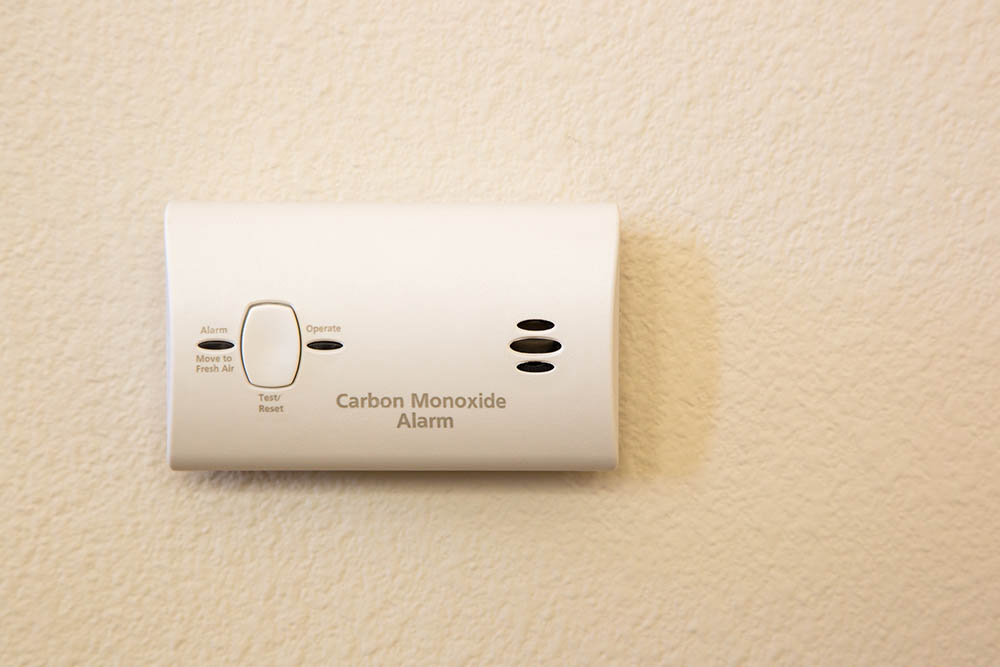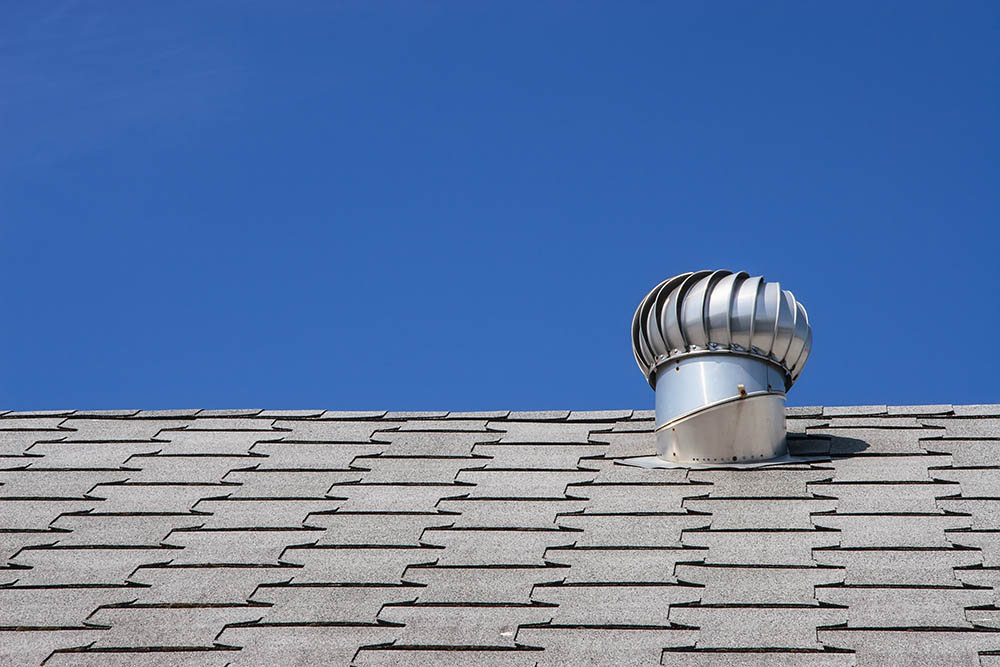How to Get Rid of Carbon Monoxide in Your Home: 5 Effective Methods
-

- Last updated:

History is replete with sad stories of families dying due to accidental exposure to carbon monoxide (CO). In fact, according to the Center for Disease Control1 (CDC) about 10,000 people are treated for CO poisoning in the US every year, and about 400 people succumb due to unintentional exposure to the gas. Since this gas has had a high mortality rate in humans over the years, you might think that it is a weapons-grade gas designed for tactical warfare. However, it is a common gas found in most households.
Carbon monoxide is a colorless, odorless, and tasteless gas usually formed by the incomplete combustion of fuel. As such, it can be found anywhere fuel burns including cars, stoves, grills, fireplaces, and other appliances. When people are exposed to this gas, the molecules from the gas displace oxygen in the body, resulting in poisoning. So, when this gas accumulates inside your house, it can cause medical emergencies among your loved ones, and even death in a worst-case scenario.
So, how does one get rid of carbon monoxide from the home? Since the gas is virtually undetectable, the only way to detect its presence is by using a carbon monoxide detector. Once you detect even tiny traces of this dangerous gas, you can reduce its concentration by cracking open a window, ventilating fuel-burning appliances, or installing CO alarms in your house.
In this article, we will look into why carbon monoxide is a dangerous gas and how to get rid of it. We will also highlight sources of carbon monoxide in the house. Read on to learn more.
What Makes Carbon Monoxide Dangerous?
Carbon monoxide is a very dangerous gas because it can go virtually undetected. Since we can neither smell, taste, nor see it, dangerous concentrations of the gas can accumulate inside our homes without us being able to detect the problem until it’s too late. Moreover, people experiencing CO poisoning have similar symptoms to the flu. Thus, most people tend to ignore the early signs of CO poisoning thinking it is just a simple common cold.
In fact, Data from the Carbon Monoxide Data portal shows that about 300 people visit the ER each year for treatment of symptoms from unintentional CO exposure.
When carbon monoxide accumulates in a home, the occupants will start experiencing a syndrome popularly known as “sick building syndrome”. It usually brings about symptoms such as headaches and fatigue, among other respiratory issues. Fortunately, the levels of CO can be reduced in your home by employing ventilation strategies and maintaining appropriate fuel-burning appliances.
The 5 Ways to Get Rid of Carbon Monoxide in Your Home
1. Install a Carbon Monoxide Detector
This is perhaps more of a protection tactic against unintentional exposure to carbon monoxide. This device will let you know if there is any CO present in your home and the specific level present. Therefore, you should install this battery-operated device on every floor and hallway in your house, especially near the bedrooms. Ensure that the detector is approved for the intended use. For instance, you shouldn’t use a CO detector in your home if it’s intended for recreational vehicles for your home. In addition, never remove or unplug the detector to silence the warning tones.
Different states have different requirements when it comes to installing CO detectors in the house. For instance, Minnesota requires every home to install at least one functional detector within 10 feet of every room legally used for sleeping. Also, the state requires that CO detectors and alarms should conform to the latest Underwriters Laboratory (UL) standards.
So, you must understand your state’s conditions and requirements before installing a CO detector. Also, make sure that you regularly replace the batteries and test the alarm’s operability every month. In case the alarms go off, don’t ignore them. Quickly move outside then contact the fire department for further assistance.
2. Run Generators Outside Only

Power failures are common occurrences in most homes. If you lose power and need to run a generator, it’s best to use it outside in a well-ventilated environment. Most people are usually tempted to run it in the garage, crawlspaces, shed, or garage for security reasons. However, if a generator runs in a confined space, carbon monoxide will accumulate to toxic levels. If you absolutely have to use a generator, ensure it is at least 20 feet from the nearest doors or windows.
3. Natural Ventilation
Sometimes, a simple action such as cracking open a window to let fresh air in can go a long way to protecting you and your loved ones from CO poisoning. You can naturally ventilate your home by installing screen windows and doors. Whenever possible, leave them open to let fresh air inside your home and let out any carbon monoxide that might have been lingering inside. This method is especially ideal for people who use supplemental heat sources, such as a fireplace or a vent-free heater.
4. Install a Home Ventilation System

If simpler tactics such as opening a window to ventilate the house do not work, consider installing a ventilation system in your home to improve air quality.
- An exhaust ventilation system that directs indoor air outdoors
- A supply ventilation system that sucks outdoor air indoors.
- A balanced ventilation system is a combination of both methods and is highly effective in different climates. In a balanced setup, a duct system directs air into the house while the other channels it out of the house.
5. Properly Aerate and Maintain Fuel-Burning Appliances
You should find out which appliances in your home require burning fuel and make sure that they are properly maintained. These appliances should be regularly aerated outside and inspected by a contractor at least once a year to ensure everything is running smoothly.
- Presence of soot around burning appliances. It could also be soot fallen in a fireplace.
- Excess moisture on windows, walls, and cold surfaces
- Combustion appliances produce yellow or orange flame instead of blue
- Presence of discoloration on the bricks on top of the chimney.
- Presence of rust on appliance jacks or flue pipes.
- Lack of an upward draft in your chimney
When using fuel-burning appliances, ensure that you don’t use outdoor appliances inside your house. Appliances such as grills, camp stoves, and lawn equipment should be limited to only outdoor use. Also, never let your vehicle run idle while inside the garage. You should also check for blockage inside your exhaust pipe, especially during winter.
Sources of Carbon Monoxide in a Home
If you dry your clothes with dryers that use gas, then they are likely to emit carbon monoxide. Though the level might be lower than that of the other gas-powered appliances in your home, it is still enough to cause poisoning symptoms. Also, if the dryer vent is clogged, the CO will be trapped inside your home instead of being vented outside. Other major sources of CO include:
1. Kerosene Gas Heaters
Besides being a fire hazard, kerosene gas heaters can release sulfur dioxide, carbon dioxide, nitrogen dioxide, and carbon monoxide gases. If the room is not sufficiently ventilated or the heater is faulty, these gases will accumulate in your home increasing the susceptibility to CO poisoning.
2. Gas Stoves

Cooking gas stoves also emit a dangerous dose of carbon monoxide. Fortunately, gas stove manufacturers have been making significant improvements in reducing carbon monoxide emissions on new stove models. So, you might want to upgrade from the traditional hazardous gas stove. When making a gas stove purchase, ensure that you get one with a proper range hood because it is more powerful and has faster airflow.
3. Gas Furnace
Sometimes gas furnaces experience leaks in the heat exchanger, among other issues that reduce airflow. In such a scenario, CO will stay in your home instead of being ventilated outside. These issues usually arise when the system is clogged or when you forget to change the air filter. The problems with the gas furnace are also caused by a faulty heat exchanger, which is fairly expensive to replace.
4. Anything that Burns Charcoal, Oil, or Wood

As mentioned above, CO is formed by the incomplete combustion of fuel. So, when these fuels are burned in a room that has insufficient oxygen, CO is formed. You have to regularly inspect your chimney and fireplace for any signs of soot. Sure, carbon monoxide clears out of a fireplace after each use, but it can get trapped and accumulate in a room if soot and creosote buildup is not removed.
5. Portable Generators
Portable generators produce more carbon monoxide than an idling vehicle in a garage. Therefore, whenever you need to power a generator, ensure that it is placed in a well-ventilated area a few meters from your windows and doors.
Conclusion
Carbon monoxide is a dangerous and silent killer that is common in most US households. It goes virtually undetected until it’s too late. If CO levels increase in your home, you risk CO poisoning, which effects are adverse to the human body.
Anyone who uses fuel-burning appliances in their home should be very wary of carbon monoxide. It is also produced by generators, gas furnaces, gas stoves, and kerosene gas heaters. To determine if CO is present in your home, simply purchase a carbon monoxide detector which can be installed outside bedrooms and hallways.
If the CO detector alarm keeps going off, that means that CO levels in the house are significantly high. To get rid of CO in your house, simply open doors and windows to aerate the house. If you use fuel-burning appliances, ensure that they are regularly cleaned and aerated. If these simple tactics do not work, you can always change the ventilation system of the entire house.
Featured Image Credit: Andy Dean Photography, Shutterstock
Contents



